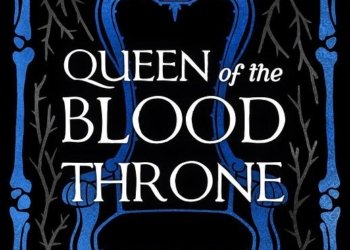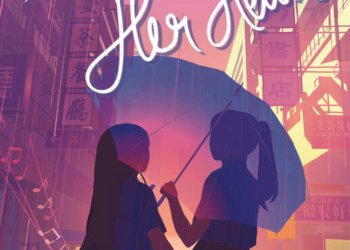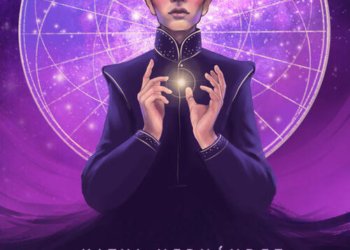No products in the cart.
The Girl with No Face by M H Boroson (The Daoishi Chronicles #2)
“How could we hope to heal from the traumas of the past, when those traumas shape who we are and how we act in the present?”
The famed martial artist Bruce Lee penned an eight-page treatment for a narrative about Chinese immigration in the old American West, I discovered a few months ago. A television programme called “Warrior” by Cinemax was based on Lee’s writing and follows a guy who immigrates to San Francisco from China in the late 19th century in quest of his sister. Even though it wasn’t historically accurate, I learned a lot. The Chinese were isolated into a small, run-down enclave known as Chinatown, where gangs and tongs competed for control of organised crime in the city, including opium dens, brothels, and illegal goods, instead of the great American wealth that many of their compatriots craved.
The majority of Chinese were forced into conditions of slave labour and were paid just enough to subsist. When they passed away from illness, tiredness, or cruelty, they were quickly replaced by new immigrants. They were compelled to construct railroads and other city infrastructure. The widespread bigotry that permeated the population made the Chinese easy prey. It didn’t matter if you were just walking to work or making a grocery run—stepping beyond Chinatown was enough to get you beat up or jailed. The odds were against you if you were a Chinese immigrant: you were poor, you lived in a hostile and ignorant environment, and you had nowhere else to turn.
The Girl with No Face, the second instalment of M. H. Boroson’s “The Daoshi Chronicles,” which made its debut in 2015 with The Girl with Ghost Eyes, is set in this world. Despite the fact that the books are serialised, one can begin with The Girl with No Face and not feel lost, though I strongly suggest doing so. You’ll want to spend as much time as you can with Li-Lin.
“I already know the word zhongli, the attraction between celestial bodies. The Americans had their own name for it: ‘gravity.’ That word had another meaning, because gravity is seriousness. I loved that image, object drawing closer because of how seriously they took each other. Growing up I was always the moon orbiting my father’s planet, eclipsed by him and in his shadow.”
I’m aware that I’ve so far created a gloomy picture, yet this novel is also full of wonder and beauty. It combines historical fiction, horror fantasy, Chinese mythology, Daoism, ancient traditions, spiritual creatures, and sword fights that go all the way to Hell itself to slay demons. The narrative of a young widowed woman whose gender is marginalised in her community and whose uncommon ability to view the afterlife strains her connection with her more traditional father but also heartwarming. Because she is a woman, her extraordinary bravery and sense of moral fairness are frequently disregarded. But when her husband was murdered by American police, her father serves as both her guide and the last remaining member of her family. Despite having had a challenging life, Li-Lin conducts herself with honour, respect, and tenacity. She frequently finds herself in perilous circumstances, yet she always tries to find a peaceful solution before turning to violence.
“The world is not kind to people like us. We’re women so we can’t own land; we’re Chinese so we can’t open bank accounts; we’re Chinese immigrants so we have no path to citizenship. So many doors are closed to you and me. Youth and beauty can open some doors for us, but youth and beauty do not last; we must use them well before they’re gone.”
The force and honesty of the narrative voice are two of this book’s many virtues. Of course, I’m not a 22-year-old female Chinese-American martial artist who directs spirits to their final resting places—at least, I don’t believe I am—so I can’t comment on its veracity. However, Boroson interprets Li-experiences Lin’s in such captivating and revelatory ways that I had the impression of experiencing a completely different way to perceive and engage with the world. The voyage of Li-Lin is full of fascinating and completely unfamiliar aspects of the human experience. Searches for missing souls, interactions with diverse Dao and Buddhist spirits and devils, searches for spiritual customs and rites, and a complex mystery that unfolds in unexpected ways all play a part. The combination of all these qualities and Boroson’s deft, beautiful style creates a spectacular reading experience.
Long before I started reviewing books for fun, I remember reading The Girl with the Ghost Eyes when it first came out. It was amazing how one book could capture what it might have been like to live during that era while also introducing incredible elements of fantasy, horror, action, spirituality, religion, deep character development, and pure wonder. Boroson had created a world that was unlike any other, and it has always stuck in my mind. The relationships become more intricate, the action scenes are more satisfying, the mysteries are intriguing, and the tragedies cut even more in The Girl with No Face. I can’t think of another book that has drawn me so deeply into its legend and transported me out of my own thoughts. If any of the aforementioned subjects interest you, go get a copy from NetGalley right away, pre-order it from a shop, or go get the first book in the series.
The Review
The Girl with No Face
9.5 Score
This is the second book in a fantasy series starring Xian Li-lin, a young Daoshi priestess in Chinatown in turn-of-the-century San Francisco. Daughter of an experienced Daoshi priest with whom she is often at odds, Li-lin was born with “yin eyes” that allow her to see into the spirit world—a gift that is often far from welcome.
PROS
- Fascinating immersion in Chinese mythology.
- A sumptuous, dazzling novel.
- Exciting and fun read, plus learning.
- Absolutely magnificent.
CONS
- Ghost eyes dumb.
- Cannot recommend this.
- Not worth reading.
- Lost its way.










